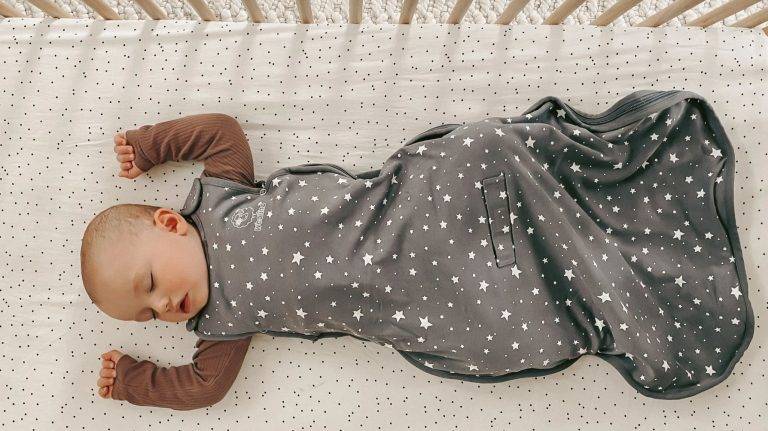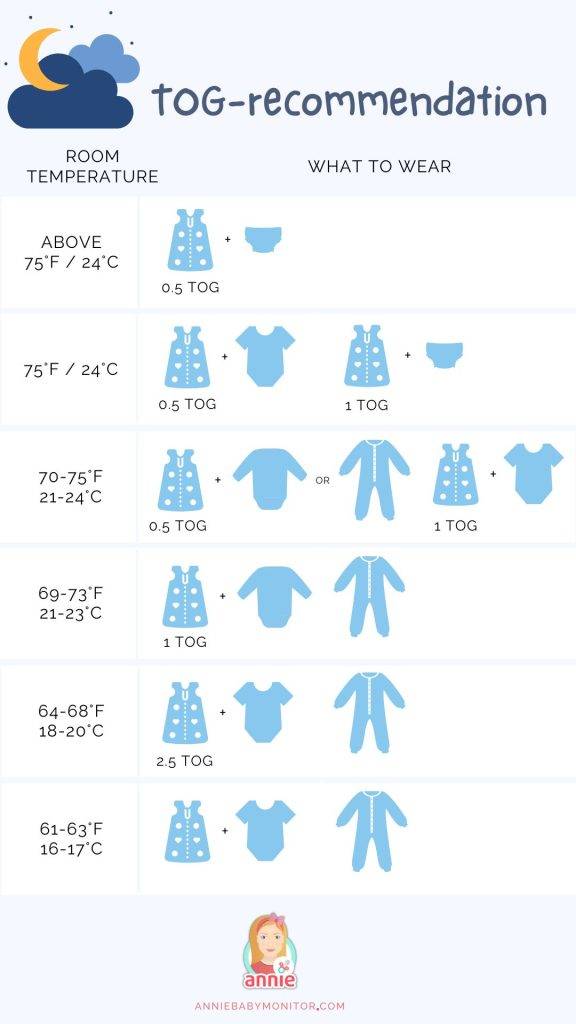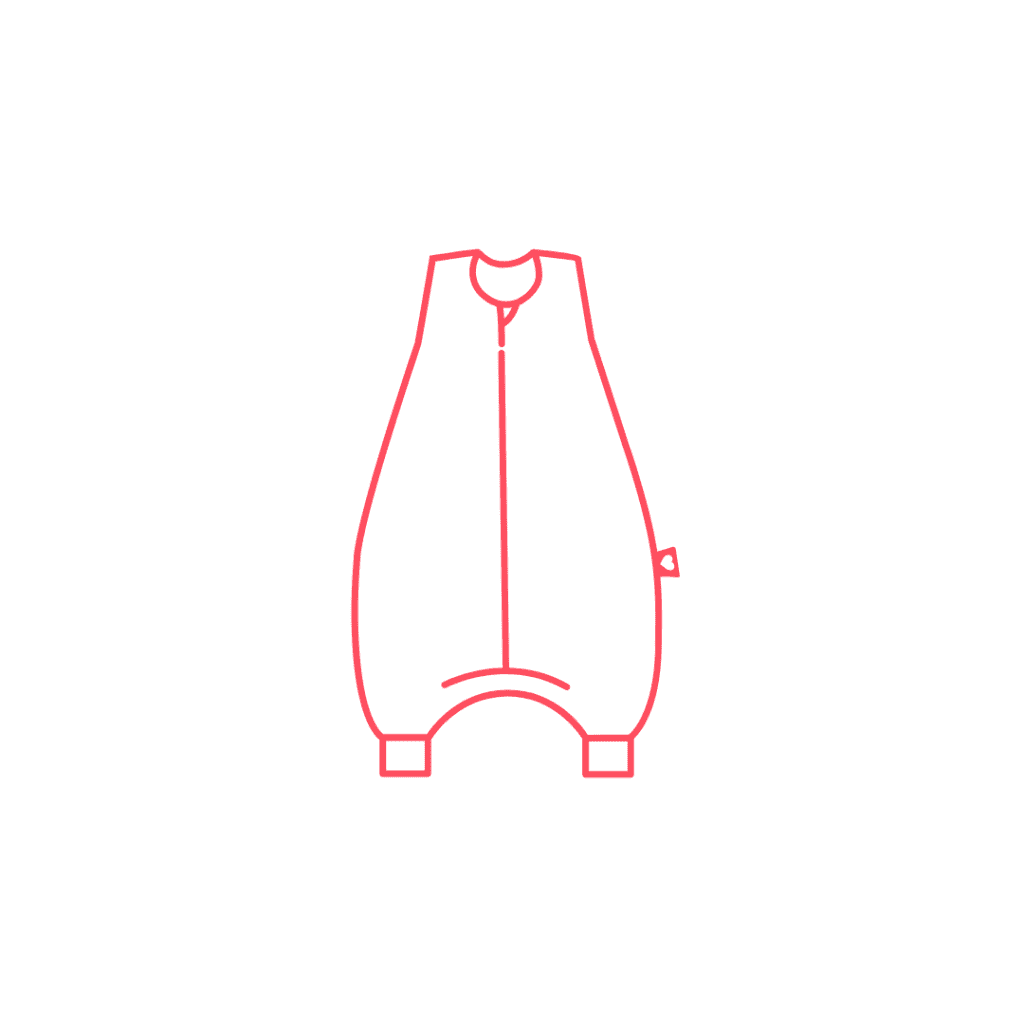
Your Baby Sleeping Bag Guide
- Created:
11. 11. 2025 - Updated:
23. 9. 2025
Helping your baby feel safe and comfortable while they sleep is one of the best ways to encourage longer, more restful nights – and that means you’ll hopefully get some extra rest too!
A baby sleeping bag can make bedtime easier and safer, removing the worry of loose blankets and helping your little one settle.
This baby sleeping bag guide walks you through everything you need to know – from sizes and styles to tog ratings and safety tips.
What is a baby sleeping bag?
A baby sleeping bag is essentially a wearable blanket designed to keep your baby at the right temperature while they sleep. Unlike traditional blankets, it stays securely in place, meaning your baby can wriggle, kick, and roll without becoming uncovered.
Sleeping bags come in a variety of sizes and materials, with different TOG ratings to suit each season. From swaddle-style bags for newborns to roomy designs for toddlers, there’s an option for every stage of your baby’s sleep journey.
Benefits of a baby sleeping bag
- Keeps your baby at a safe, consistent temperature all night
- Removes the need for loose blankets or sheets that could cover their face
- Offers freedom to move while keeping them snug
- Helps create a familiar sleep routine, as babies often associate the bag with bedtime
- Convenient for night feeds – you can lift them out of the cot without undressing
- Travel-friendly and useful for naps on the go
- Easy to wash if there are accidents or spills
- Provides peace of mind that your baby’s sleep space is safer and more secure
Understanding TOG ratings
The word “TOG” stands for Thermal Overall Grade – a measure of how warm a fabric keeps you. Baby sleeping bags usually range from 0.5 TOG (very light) to 3.5 TOG (extra warm).
You’ll likely need more than one bag with different TOG levels to suit changes in weather and room temperature.
Which TOG should you choose?
The right TOG depends on the temperature of your baby’s room:
- Below 60°F / 14°C → 3.5 tog with a bodysuit and sleepsuit (rarely needed unless in very cold climates)
- 61-63°F / 16–17°C → 2.5 tog with a bodysuit and sleepsuit
- 64-68°F / 18–20°C → 2.5 tog with just a bodysuit
- 69-73°F / 21–23°C → 1.5 tog with a lightweight bodysuit
- 70-75°F / 21–24°C → 0.5 tog with a lightweight bodysuit
- 75°F / 24°C → 0.5 tog or muslin bag with a short-sleeved bodysuit
- Above 75°F / 24°C → 0.5 tog with diaper

👉 Always check your baby by feeling the back of their neck or chest. If they’re sweaty or clammy, they may be too warm.
Baby sleeping bag sizes
To ensure safety, choose a sleeping bag based on your baby’s weight as well as age.
Standard sizes include:
| Baby’s Height | Length of Sleeping Bag | |
|---|---|---|
| Newborn | 50 – 59 cm 19.7–23.2 in | 54 cm 21.3 in |
| 0–6 months | 59–67 cm 23.2–26.4 in | 63 cm 24.8 in |
| 6–12 months | 67–76 cm 26.4–29.9 in | 73 cm 28.7 in |
| 12–24 months | 76–95 cm 29.9–37.4 in | 93 cm 36.6 in |
Not all bags are suitable from birth, so always check the minimum weight guidance on the label.
How should a baby sleeping bag fit?
- The neckline should be snug but never so tight it’s uncomfortable, and never so loose that your baby could slip inside.
- Armholes should be secure so that your baby’s arms stay outside. Some smaller sizes include poppers for extra adjustability.
- The bottom should be roomy enough for natural, frog-legged hip positioning.
- Avoid hoods, sleeves, or extra padding that could cause overheating.
- Look for smooth seams and covered zips for comfort and safety.

Materials for baby sleeping bags
The fabric you choose matters for comfort and temperature control:
- Cotton → breathable, natural, and suitable for year-round use
- TENCEL™ → soft, moisture-wicking, and ideal for sensitive skin
- Polyester fillings → lightweight warmth, easy-care, and durable
Choose washable materials (ideally machine-washable at 60°C) to maintain hygiene.
Safety tips for sleep time
- Keep the room at around 18°C if possible
- Don’t add extra blankets or duvets with a sleeping bag
- Regularly check your baby’s temperature by touch
- Always lay your baby on their back, with feet positioned at the bottom of the cot
- Avoid bags with drawstrings, buttons, or any loose parts
Styles of baby sleeping bags

Classic baby sleeping bag
✔ Ideal for newborns and babies who move less during sleep
✔ Keeps your baby warm, cosy, and secure all night
✔ Prevents fabric from covering the face for safe baby sleep

Sleeping bag with feet
✔ Perfect for active babies, toddlers, and young children
✔ Offers more freedom of movement when crawling, standing, or walking
✔ Helps prevent uncovering at night and reduces the risk of stumbling when getting up

Sleep sack
✔ Ideal for newborns and premature babies
✔ More freedom of movement for legs and arms
✔ Prevents the blanket from slipping and strengthens leg muscles
Conclusion: Your go-to baby sleeping bag guide
A baby sleeping bag is one of the simplest ways to support safe, restful sleep. It replaces loose covers, helps regulate temperature, and becomes part of a soothing bedtime routine.
By choosing the right size, tog rating, and style, you can create the perfect sleep environment – helping your baby (and you!) enjoy peaceful nights.
FAQ: Baby Sleeping Bag Guide
Yes, baby sleeping bags are a safe and practical alternative to blankets as they help keep your baby at a consistent temperature and reduce risks of suffocation.
It depends on room temperature—1 tog is better for warmer rooms (above 21°C), while 2.5 tog is suited for cooler rooms (16–21°C).
Most sleeping bags can be used from birth if your baby meets the minimum weight requirement, otherwise they’re typically introduced from a few weeks old.
Yes, if the room is too warm or your baby is overdressed, overheating can occur, so always check your baby’s temperature and adjust layers accordingly.






